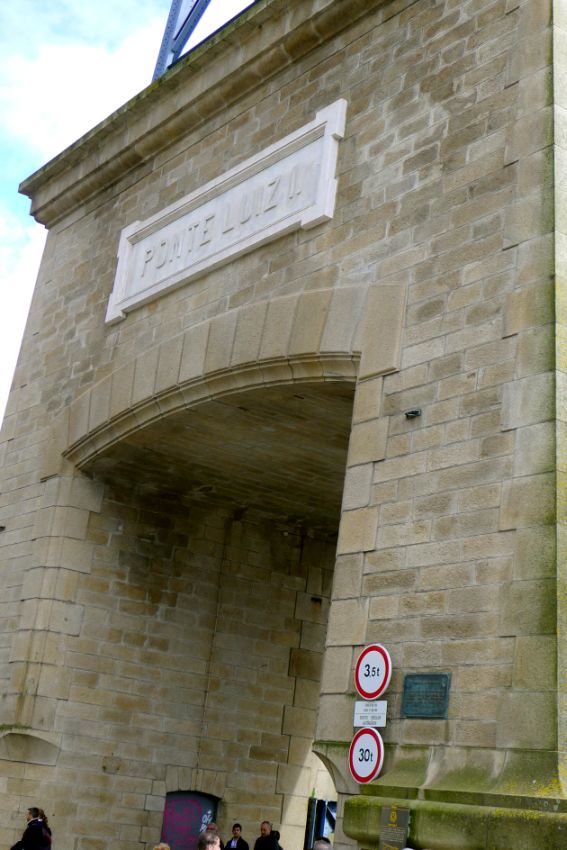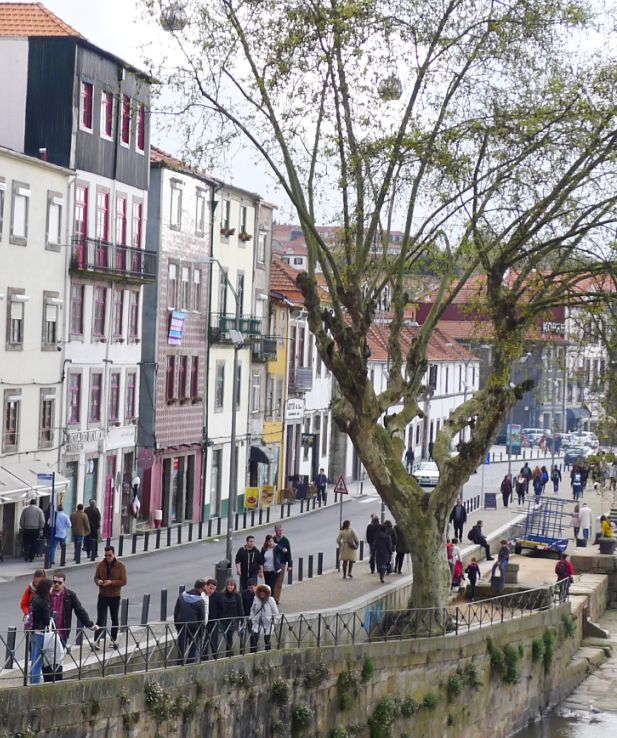Portugal-
4/13- 4/20/2016
Porto located along the Douro river
estuary is the second-largest city in Portugal, after Lisbon, and one of the
major urban areas in Southwestern Europe.
Porto is less polished than Lisbon, but
it's also full of Old World Charm. Houses with red titles roofs tumble
down the hills to the riverbank, mosaic patterned stones line streets, an flat
bottomed boats called "Rabelos" ply the river. The old town was
spared by the devastation of the great earthquake in 1755, and today is
preserved as World Heritage Site.
The city's name comes from the Romans, who
dubbed the port town Portus Cale. When Porto's Christians conquered the
Moors in the southern half of the country, the city's name became the name
of the whole country. The British, who gave a long standing trading
association with the city, refer to the town as "Oporto" a combination of two
Portuguese words meanings "the port".

Placa de Ribeira (Riverbank in
Portuguese), the main square facing the river, was long the city's front door, spreading alongside
the Douro river and used to be a center of intense commercial and
manufacturing activity since the Middle Ages.
Now it is the city's most scenic and
touristy quarter, with the highest concentration of restaurants and postcard
racks.

Colorful housing complex facing the Ribeira.

Rabelo boat is a traditional Portuguese
cargo boat that for centuries was used to transport people and goods along the
Douro River.
Rabelo boats are specific of the Porto
region as its history is closely linked to the production and trade of port
wine. Before the arrival the railway, Rabelo boats were the fastest and
the most efficient means of transport between the Douro Valley, where port wine
is produced, and the city of Porto, where it was traded and exported worldwide.
Although not in use anymore, still today the
Douro River holds these vessels, belonging to port wine companies, in the cities
of Porto and Gaia.

Cruise boats are very popular with tourists.

These days Rabelo boats are converted to cruise
boats-A cruise on the river lasts about 50 minutes.

Straight ahead is the double-decker bridge
Ponte Dom Luis I which is an icon of the city of Porto.

The bridge spans the River Douro linking the Port wine houses
of Vila Nova de Gaia with the bustling downtown Ribeira district of Porto.
The names of the bridge came from the then king of Portugal, Luís I, and
his wife, Maria Pia of Savoy.
With a span 564 ft and a height of 146 ft
this was a great feat of engineering. Designed by Téophile Seyrig, who was
Eiffel's partner on the famous Eiffel tower in Paris.
One of the notable features of the Ponte Dom
Luís I is it's two levels; one on top of the arch and the other suspended below
it. Both decks were initially intended to carry road traffic but these days the
top carries the Porto Metro trains as well as having a pedestrian walkway.
|

Sign pointing to the entrance of the bridge from the Ribeira
side |

Construction took place between 1881 and
1886 with the bridge being built adjacent to an existing bridge which it
replaced.
The granite pillars of the original bridge
are still in place, standing on the Ribeira like a pair of gate posts. |
We are now crossing the bridge on the
lower level. Below us is the Douro river and next to the bridge is an
elevated almost at the same level of the bridge where people can sit to eat or
drink while watching the Douro River.

The Ribeira view from the bridge.


Across the river is the town of Gaia.
Technically Gaia is a separate town from Porto, even thought it is just across
the river and feels like part of the city.

If you are in Porto, make sure to cross the
bridge to go to Gaia. It is worth the trip.
Lots of local vendors on the streets selling
local jewelries, clothes, etc..
It is a fun walk and the view of the Ribeira
is outstanding from Gaia side.
After walking in Gaia it is lunch time and
we were hungry. Time to back to Porto to find a restaurant ...
Next.. Lunch at A Grade



















